tropical plants in tennessee
mossyrock
16 years ago
Featured Answer
Sort by:Oldest
Comments (31)
Amazindirt (7a TN)
16 years agogreenhouser
16 years agoRelated Discussions
The Middle Tennessee Plant Swap
Comments (11)It's only a few weeks away now! Where are all the swappers posting their have/want lists? Here's mine, copied from my post on our Fb group: Heather-Lin's 2013 Spring Swap List I have a lot to declutter out of my gardens this year! Rather than post a long, LONG list, instead I'll post a link to my sales album. The album has pictures for many of the plants on the list; it should save y'all a ton of time googling;) In addition to my public list, I also have red mustard seedlings, purple water pickerel, Ice King daffodils.... Plus oodles of seeds. Check my gardenweb link at the bottom for lists of those. I'll also be bringing orange tape and flags to help organize the rows of swappers:) What I'm looking for in exchange: -Help in the garden! I'm serious y'all, if you wanted to come help me pull weeds or plant stuff for a couple hours, I would be delighted to pay you in PLANTS!!!! -Veggie starts; I have tomatoes, but am looking for unusual peppers, squash, melons, Dinosaur Redbor or Greenbor kale, broccoli, red cabbage, beans, etc. -Unusual herbs: I killed my golden lemon balm so that's back on my wish list;) Melissa 'Aurea' - Variegated Lemon balm Mint - also known as red stemmed or double mint Salvia elegans 'Honey Melon'/'Honeydew Melon'- early blooming pineapple sage Symphytum x uplandicum 'Axminster Gold' - Variegated Comfrey -Plants: Amorphophallus konjak - Voodoo lily bulbs Centaurea montana 'Amethyst in Snow', or other white/purple variety Anemone coronaria - poppy anemone bulbs, esp white with purple eye! Kniphofia 'Toffee Nosed' 'Jane Henry' 'Christmas cheer' ‘Princess Beatrix’ ‘Goodeys Pink’ or other ivory, cream, pink, peach, buff colors Narcissus 'Royal Princess', 'Pipit', fragrant varieties Pardancanda norrisii 'Dazzler' 'Heart of Darkness' 'Sangria', or other unusual blackberry or candy lilies Clematis Niobe, or other dark burgundy colored Viburnum 'Onondaga' Irises... Oh too many, but for right now, Indian Chief, Devil baby Delosperma 'Eye Candy' and peach colored Daylily 'Mapping Tennessee' 'Milk Chocolate' 'Grey witch' Osteopsoermum, margarita line, the one with mauve, peach, pale yellow and purple eye Lantana Tropical fruit ....,and then I just HAD to go and look at Mary's website (in mcMinneville) and found lots of neat things to add to my wish list LOL.... Scabiosa ‘Beaujolais Bonnets’ Phyteuma scheuchzeri (Horned Rampion) Bronze sweet potato vine Cherry berry hosta LA irises 'Peaches & Wine’ ‘Red Velvet Elvis’ LINKS: My FB have list, plus photo album: https://www.facebook.com/media/set/?set=a.347733502003671.1073741825.194843057292717&type=3 My Pinterest wish list http://pinterest.com/heatherlinb/plants-i-want-gonna-be-a-long-list/ My Gardenweb have/wish lists http://members.gardenweb.com/members/exch/heathersgarden -------- PRE-TRADES Glenda: Bringing hyper tufa bowl Judith: Euphorbia and vernonia gigantea, apache In exchange for P caerulea, maybe, I don't remember? Tom: Bring Tom $$$ for row cover!!! And comfrey. Angela: Giving purple beauty berry In exchange for ? Connie: Becky Shasta daisy, Walkers low catmint In exchange for ?...See MoreThe Middle Tennessee Plant Swap
Comments (33)I'm planning to attend. I feel really bad not having even been on the TN forum for so long. I won't even talk about how disappointing a growing year it has been - too depressing. I know others experienced/are experiencing the drought. Alas it was even sadder things that have kept me from my former happy-to-jump-in behaviour. Our two eldest Rotties crossed over the Rainbow Bridge within less than a month of one another and that was kind of the cherry on top of the series of sucky seasons. At the Spring swap though I said I would roast a turkey for the Fall swap, and that is still my plan. If I screw up the turkey, I'll bring another meat of substance. And probably some side dish(es) of some sort. I've had one issue after another with the tires on my 'van, so even now I am trying to plan around using DH's little car. I'm not sure if I will be coming alone or with one or more kids? I've asked my mother if she'd like to do the day-trip with me. Next to nothing to trade, save some baby cacti that folks can grow up indoors through the winter and take outside when the weather gets nice again next year. They aren't hardy outdoors all year round in our area, but even when they reach mature size (they bloom in flushes when old enough) they are very feasible to have growing in a pot that can be moved in and out as need be. I know I need to make contact with some folks I met at the Spring swap and see what the chances are of them having an extra of this or that plant that either didn't weather the drought or despite my TLC, here recently croaked on me. It's been a very strange growing year to be sure. I'm looking forward to the lecture. While I haven't jumped right in, one thing this year has brought me, was to a point of more interest in Daylilies. That's actually something I was able to harvest some seeds of to share. Nothing fancy, an unknown yellow, but perky and bright. Hermit...See MoreFall 2011 East Tennessee Plant Swap - Results
Comments (2)Pictures of the swap can be found at the link below. I've separated the pictures from the text for people with slower connections. Here is a link that might be useful: Fall 2011 ETPS - Pictures (warning: multiple large pics)...See MoreHelp/advice on tropical/sub-tropical plants planted in ground/pot!
Comments (1)I'm selling some seedlings online check them out: http://www.ebay.it/sch/nearestheaven/m.html?_nkw=&_armrs=1&_ipg=&_from=...See Moregreenhouser
16 years agobrandon7 TN_zone7
16 years agoAmazindirt (7a TN)
16 years agoAmazindirt (7a TN)
16 years agogreenhouser
16 years agoAmazindirt (7a TN)
16 years agoAmazindirt (7a TN)
16 years agogreenhouser
16 years agoTnShadyLady
16 years agosaraintn
16 years agomyrtleoak
16 years agomyrtleoak
16 years agoAmazindirt (7a TN)
16 years agobuckn21
16 years agomyrtleoak
16 years agobrandon7 TN_zone7
16 years agoAmazindirt (7a TN)
16 years agobuckn21
16 years agomyrtleoak
16 years agoAmazindirt (7a TN)
16 years agomyrtleoak
16 years agoAmazindirt (7a TN)
16 years agolucky_p
16 years agoAmazindirt (7a TN)
16 years agomyrtleoak
16 years agobuckn21
16 years agoabercrombie4me03
15 years agoHU-547577271
3 years ago
Related Stories
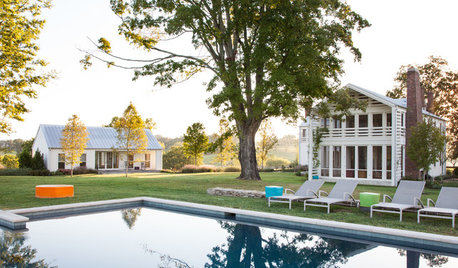
HOUZZ TOURSWe Can Dream: An Expansive Tennessee Farmhouse on 750 Acres
Wood painstakingly reclaimed from old barns helps an 1800s farmhouse retain its history
Full Story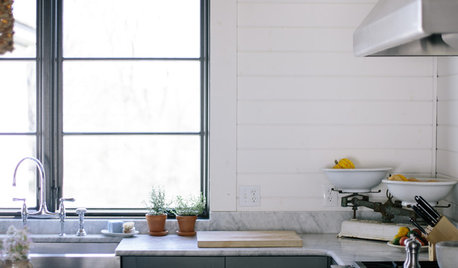
FARMHOUSESMy Houzz: A Rustic Family Farmhouse in Tennessee
Country style meets modern charm in this updated one-story home near Nashville
Full Story
BASEMENTSBasement of the Week: Luxurious and Lovely in Tennessee
Bright artwork led to this walk-out’s restful, neutral palette, but the generous amenities are the real soothers here
Full Story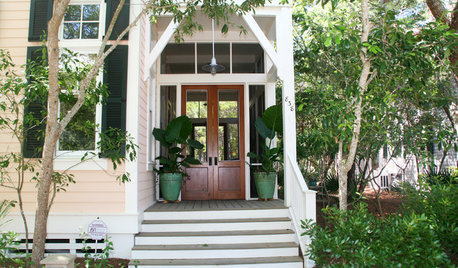
CONTAINER GARDENSWant an Easy Tropical Oasis? Think Container Plants
Tropical plants have taken one coastal community by storm. Come on a walk with us to get ideas for your own porch, patio or garden
Full Story
DECORATING GUIDESInspiration: Tropical Plants
Tropical wallpapers, floral arrangements, tiles and more
Full Story
GARDENING GUIDES7 Tropical Wonders of the Plant World
Go for high impact with the spectacular foliage, over-the-top florals or iconic profiles of these hand-picked tropical favorites
Full Story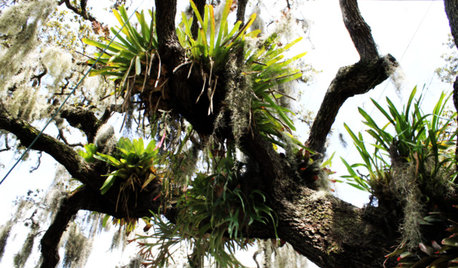
GARDENING GUIDESGot a Hot, Humid Landscape? Add Tropical Flair With Air Plants
Turn tree trunks and walls into lush canvases with plants adapted to the canopies of the rainforest
Full Story
GARDENING GUIDES9 Clay-Busting Native Flowers for Summer Sun
These plants survive and even thrive in tough clay soil east of the Rocky Mountains
Full Story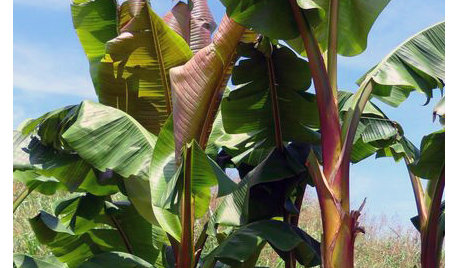
GARDENING AND LANDSCAPINGBring the Tropics to Your Cold-Climate Garden
Delightfully deceptive, these plants combine a durable nature with a tropical look to add a touch of the exotic to cooler landscapes
Full Story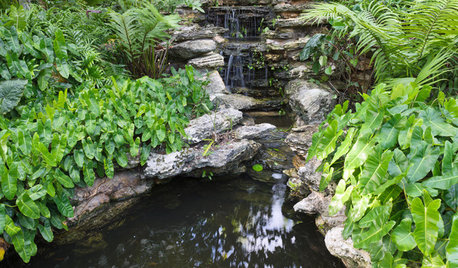
LANDSCAPE DESIGNRecipe for Tropical Edible Garden Style
Appeal to exotic good taste with fruit trees, palms and tropical look-alikes in your temperate-climate garden
Full Story


intimidator_3